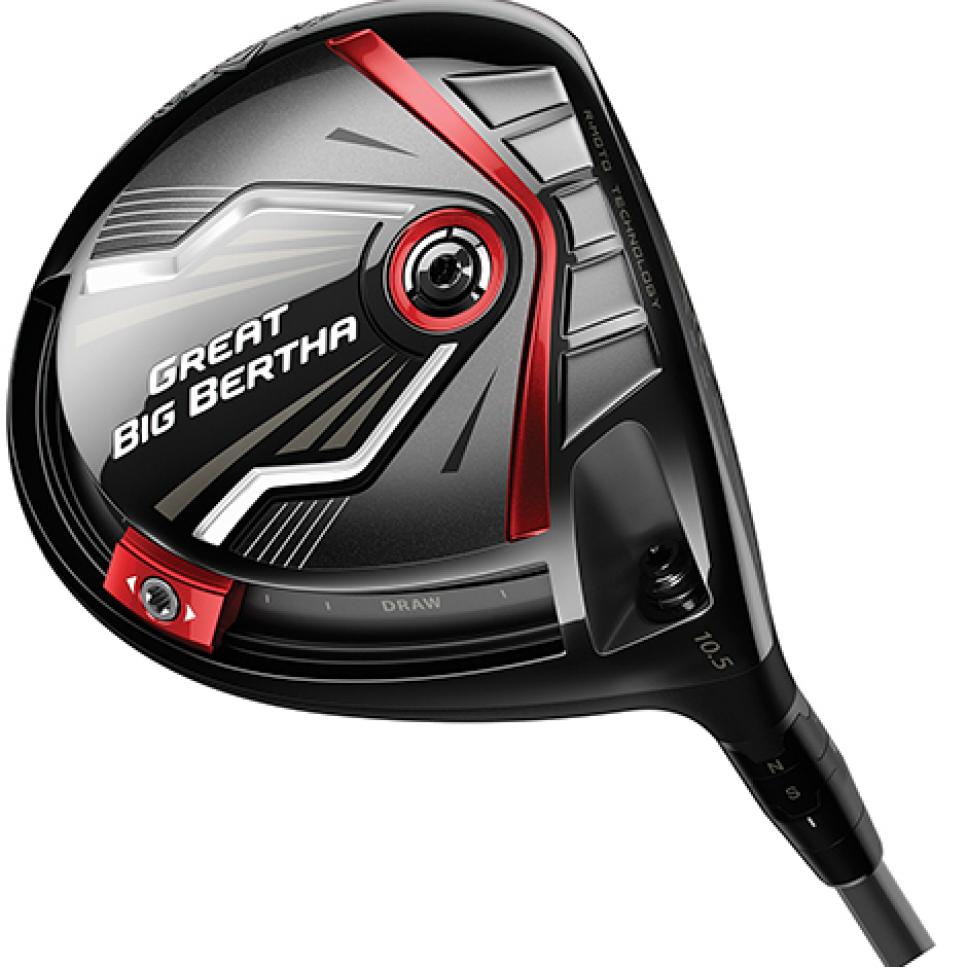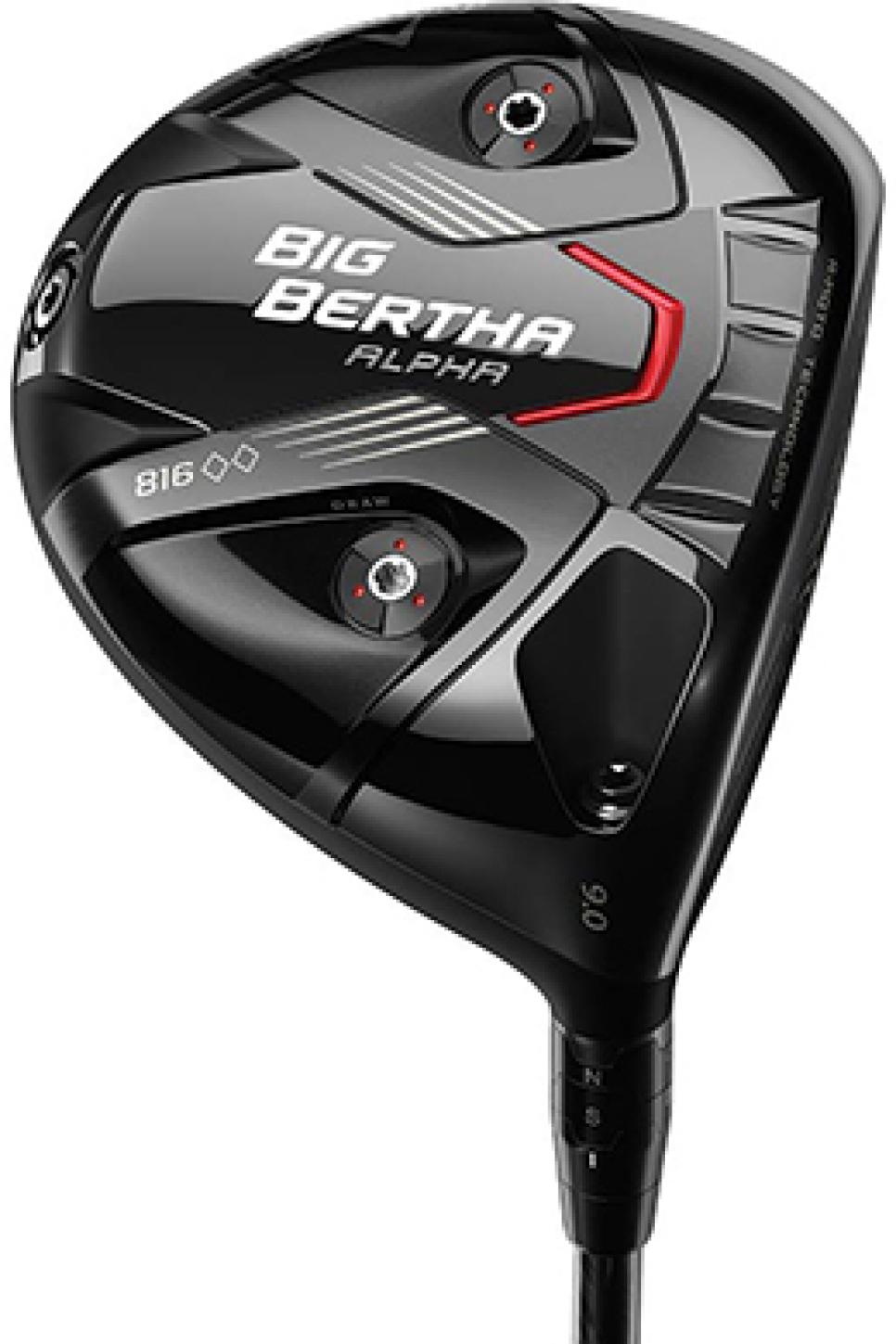News
Callaway expands adjustability with new Great Big Bertha and 816 drivers

Hence, the company announced two new models Tuesday morning. The new Great Big Bertha features a sliding weight in the rear perimeter that yields an internal weight bias (toward the heel or toe) that affects ball-flight direction side to side. The two approaches continue the company's focus on adjustability and diversity in drivers, a far cry from the one size fits all approach from 20 years ago when Callaway first introduced a driver under the name Great Big Bertha.
While the new Big Bertha Alpha 816 Double Black Diamond is focused on better players and is for a more limited audience, it features the company's unique movable weight cylinder that can be positioned in either the heel or toe for degrees of draw or neutral bias. The cylinder can be positioned either heavy side down or up to further control spin.
"Both of these drivers grew out of player test data and our experience with where tour player trajectories are," said Evan Gibbs, Callaway's senior R&D woods manager. "But what we've been able to do is use multiple materials and adjustability to satisfy these two types of players."
While driver technologies today tend to offer a unique array of capabilities and features, at the end of the day, a driver really has only one job: distance. But Gibbs says players achieve more distance in different ways. With Great Big Bertha, the approach is more direct. With Big Bertha Alpha 816 DD, the approach is more subtle.
Gibbs says shot straightness was the main motivating factor on Great Big Bertha. "We think with this player, controlling the lateral shot shape is the most important way for improving performance," he said. "We design the head to overcome inefficiencies in impact, but there are also gains in how the clubhead is being delivered to the ball."
Those improvements in the Great Big Bertha, which is the natural followup to 2014's sliding weight Big Bertha driver, start with a head that saves weight in the structure of the face. Unique internal ribs at the crown and sole provide stability and support flexibility to the face while reducing the mass in the front part of the club. Dubbed, R-Moto, this structure was first seen in last fall's Big Bertha Alpha 815 drivers. It's been further fine-tuned in the Great Big Bertha to provide a lighter, thinner face.
Thanks as well to the lightweight composite crown, that reduced mass up front frees up extra mass that's redistributed in a redesigned sliding weight at the rear of the club and a fixed sole weight that helps lower the head's center of gravity. The 10-gram sliding weight (up from eight grams on the 2014 Big Bertha driver) moves along a track that runs from a neutral position to an extreme heel-weighted or draw-biased position. According to Gibbs, the weight position accommodates 18 yards of ball-flight correction. The track is more concentrated between the neutral and draw bias positions than the track on the 2014 Big Bertha because Gibbs says there was less demand for fade-biased positions, even among tour players. It's designed to provide more potential draw bias than the 2014 Big Bertha driver.
The clubhead is designed with a lighter weight (198 grams) to provide more flexibility in shafts. Depending on which shaft, the Great Big Bertha can either play as a lighter weight driver designed to increase your potential swing speed or as a meatier, tour-weighted driver. Through the company's program of offering 19 premium shafts at no additional charge, the Great Big Bertha can play at as little as 295 grams or as heavy as 325 grams.
Like all Callaway drivers, the Great Big Bertha features the company's eight-way adjustable hosel that lets the golfer independently tweak the standard loft four ways (by minus one degree to plus two degrees) and the lie angle two ways (neutral or draw/upright).
The Great Big Bertha, which was put on the USGA's conforming list last Monday, already has been used in a professional victory. Kiradech Aphibarnrat had the new driver in his bag when he won the Saltire Energy Paul Lawrie Match Play Championship on the European Tour on Sunday.
Available in 9, 10.5 and 13 degrees, it will be in stores Aug. 28 ($450).

But like the original Gravity Core found on the Big Bertha Alpha and both of last year's Big Bertha Alpha 815 drivers, the cylinder does more than affect draw or fade bias. With a heavier mass on one end, the cylinder can be positioned with the heavy side down for extremely low spin. Gibbs says the club produces 200 rpm less spin with the heavy side down.
"For this type of player, we don't need as much side to side correction," Gibbs said. "We're really helping this player with fine tuning in terms of direction and spin, as well as matching their impact location to achieve the best ballspeeds."
Gibbs explained that the vertical position of the Gravity Core is not just a matter of spin. It also helps more directly line up where a better player is impacting the face with the club's center of gravity. Matching those positions means less twisting at impact, and less twisting at impact means more energy is transferred to the ball. He noted that 40 percent of the players tested achieved higher ballspeeds with the heavier side in the high position compared to the low position.
Unlike the previous Gravity Core versions, where the weight cylinder was centrally located, Gibbs said that moving to two chambers positioned in the heel and toe also improves the head's performance on off-center hits compared to last fall's Big Bertha Alpha 815 Double Black Diamond.
It also features the company's eight-way adjustable hosel to tweak loft and lie independently, as well as the updated R-Moto face structure. In the standard setup, the face angle is slightly open to match the preference of better players.
Available in limited supply Sept. 18, the Big Bertha Alpha 816 Double Black Diamond will be offered in 9 and 10.5 degrees ($500).

Meanwhile, the more compact Big Bertha Alpha 816 DD fairway woods incorporates the cup face design but also utilize two movable sole weights. The weights are positioned front and back and come in 16- and 3-gram weights. The heavier weight in the forward position is designed to reduce spin, while putting the heavier weight in the rear position improves head stability on off-center hits.
Both heads feature the company's eight-way hosel adjustability. The Great Big Bertha fairway woods come in five lofts, (15.5, 18 and 21 degrees, along with a 43-inch, 20.5-degree Heavenwood and 42-inch, 24-degree Divine Nine, both of which are not adjustable). It will be at retail Aug. 28 ($250). The Big Bertha Alpha 816 DD is available in 14-, 16- and 18-degree heads. It will be at retail Sept. 18 ($300).
